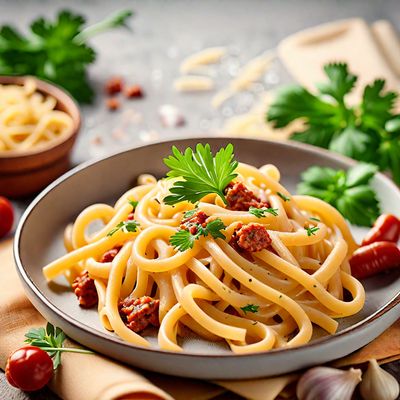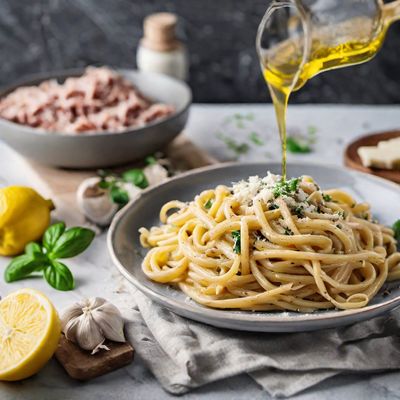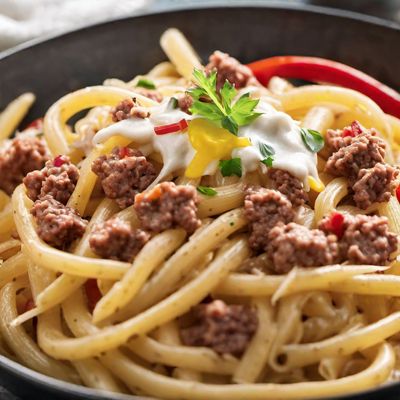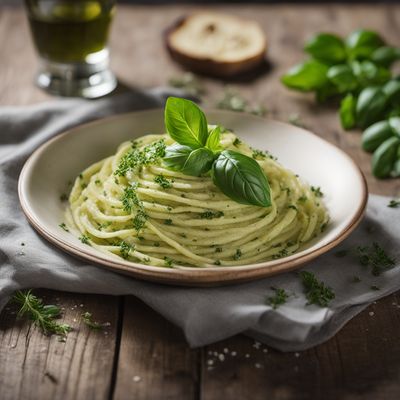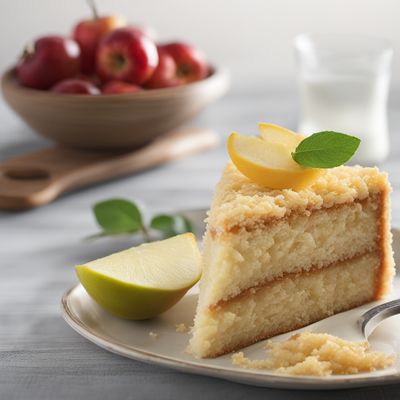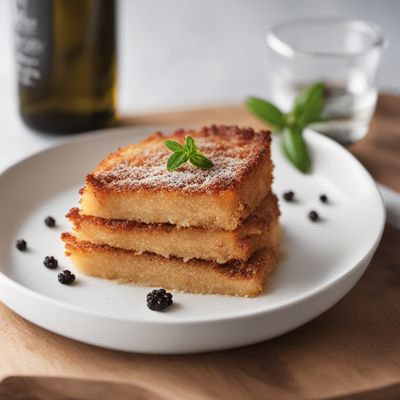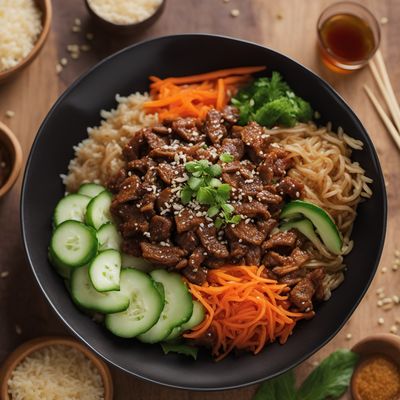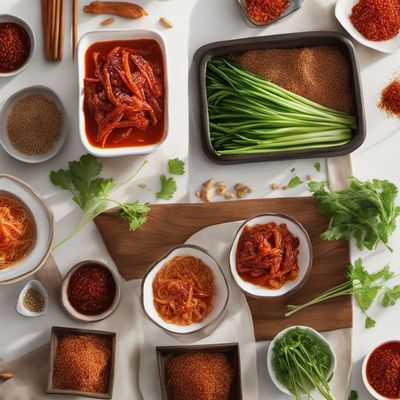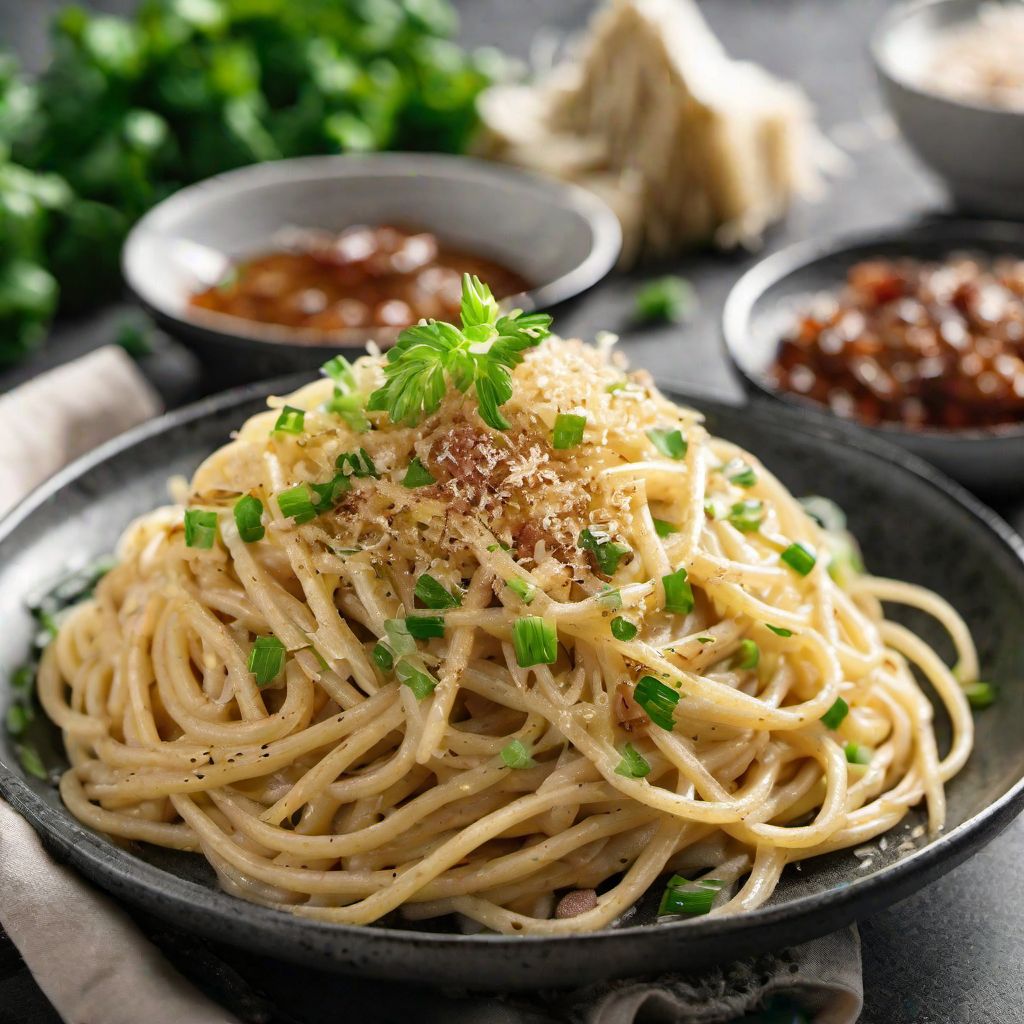
Recipe
Korean-style Pasta Carbonara
Kimchi Carbonara: A Fusion of Italian and Korean Flavors
4.8 out of 5
In Korean cuisine, bold and spicy flavors are celebrated. This Korean-style Pasta Carbonara combines the creamy richness of the classic Italian dish with the fiery kick of kimchi. The result is a unique fusion that will tantalize your taste buds and introduce you to a whole new world of flavors.
Metadata
Preparation time
20 minutes
Cooking time
15 minutes
Total time
35 minutes
Yields
4 servings
Preparation difficulty
Easy
Suitable for
Omnivore, Gluten-free (if using gluten-free pasta), Spicy food lovers, Low-carb (if using zucchini noodles instead of spaghetti), Dairy-free (if omitting Parmesan cheese)
Allergens
Pork (pancetta), Dairy (Parmesan cheese)
Not suitable for
Vegan, Vegetarian, Paleo, Nut-free, Soy-free
Ingredients
While the original Italian Pasta Carbonara is traditionally made with eggs, cheese, pancetta, and black pepper, this Korean adaptation incorporates kimchi, gochujang (Korean chili paste), and sesame oil. These additions bring a vibrant and spicy twist to the dish, creating a harmonious blend of Italian and Korean flavors. We alse have the original recipe for Pasta carbonara, so you can check it out.
-
250g (8.8 oz) spaghetti 250g (8.8 oz) spaghetti
-
150g (5.3 oz) pancetta, diced 150g (5.3 oz) pancetta, diced
-
2 cloves garlic, minced 2 cloves garlic, minced
-
1 cup kimchi, chopped 1 cup kimchi, chopped
-
2 tablespoons gochujang 2 tablespoons gochujang
-
2 tablespoons sesame oil 2 tablespoons sesame oil
-
2 large eggs 2 large eggs
-
1/2 cup grated Parmesan cheese 1/2 cup grated Parmesan cheese
-
Salt and pepper to taste Salt and pepper to taste
-
Chopped green onions, for garnish Chopped green onions, for garnish
Nutrition
- Calories (kcal / KJ): 480 kcal / 2010 KJ
- Fat (total, saturated): 22g, 7g
- Carbohydrates (total, sugars): 50g, 4g
- Protein: 20g
- Fiber: 3g
- Salt: 1.5g
Preparation
-
1.Cook the spaghetti according to package instructions until al dente. Drain and set aside.
-
2.In a large skillet, cook the pancetta over medium heat until crispy. Remove the pancetta from the skillet and set aside, leaving the rendered fat in the pan.
-
3.In the same skillet, add the minced garlic and cook until fragrant, about 1 minute.
-
4.Add the chopped kimchi to the skillet and sauté for 2-3 minutes until slightly softened.
-
5.In a small bowl, whisk together the gochujang, sesame oil, eggs, and Parmesan cheese.
-
6.Reduce the heat to low and add the cooked spaghetti to the skillet with the kimchi. Pour the egg mixture over the spaghetti and quickly toss to coat the pasta evenly. The residual heat will cook the eggs without scrambling them.
-
7.Add the crispy pancetta back to the skillet and toss to combine. Season with salt and pepper to taste.
-
8.Serve the Kimchi Carbonara hot, garnished with chopped green onions.
Treat your ingredients with care...
- Pancetta — Make sure to dice the pancetta into small pieces for even cooking.
- Kimchi — Use well-fermented kimchi for the best flavor.
- Gochujang — Adjust the amount of gochujang according to your spice preference.
- Parmesan cheese — For a stronger cheesy flavor, use aged Parmesan.
Tips & Tricks
- To make the dish spicier, add a sprinkle of Korean red pepper flakes (gochugaru) on top before serving.
- For a vegetarian version, substitute the pancetta with mushrooms or tofu.
- If you prefer a milder flavor, reduce the amount of gochujang.
- Add a splash of soy sauce for an extra umami kick.
- Serve the Kimchi Carbonara with a side of pickled vegetables for a traditional Korean touch.
Serving advice
Serve the Kimchi Carbonara hot, straight from the skillet. Garnish with chopped green onions for a pop of freshness. Pair it with a side of steamed rice or a Korean-style salad for a complete meal.
Presentation advice
For an eye-catching presentation, twirl the pasta onto individual plates using tongs. Place a small mound of crispy pancetta on top and sprinkle with additional grated Parmesan cheese. Garnish with a few strands of kimchi for a vibrant touch.
More recipes...
For Pasta carbonara » Browse all
For Italian cuisine » Browse all
More Italian cuisine dishes » Browse all

Pallotte cacio e uova
Cheese and Egg Balls Casserole
Pallotte cacio e uova is a traditional dish from Abruzzo, Italy. It is a simple and delicious recipe that is perfect for a quick and easy meal.

Spongata
Spongata is a traditional pastry from the Emilia-Romagna region of Italy. It is made with a combination of flour, sugar, eggs, butter, and dried...

Polenta con la ricotta
Polenta with Ricotta
Polenta con la ricotta is a traditional Italian dish that is perfect for a hearty meal. It is made with cornmeal and ricotta cheese, and is often...
More Korean cuisine dishes » Browse all

Gochujeon
Gochujeon is a Korean dish made by pan-frying sliced meat coated with a mixture of flour, egg, and seasonings. It is a popular snack or appetizer in Korea.
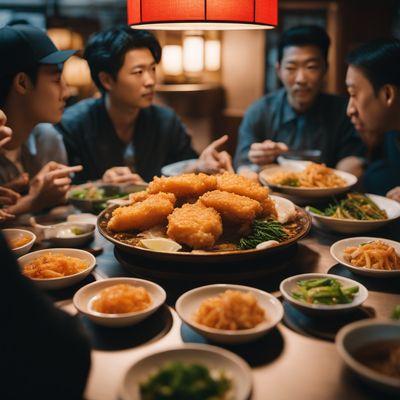
Daegujeon
Fried cod
Daegujeon is a traditional Korean dish that is made with breaded and fried fish. It is a popular dish that is often served as an appetizer or snack.

Seolleongtang
Ox bone soup
Seolleongtang is a traditional Korean soup made from ox bones, brisket and other cuts. It is a hearty and comforting dish that is often enjoyed...
